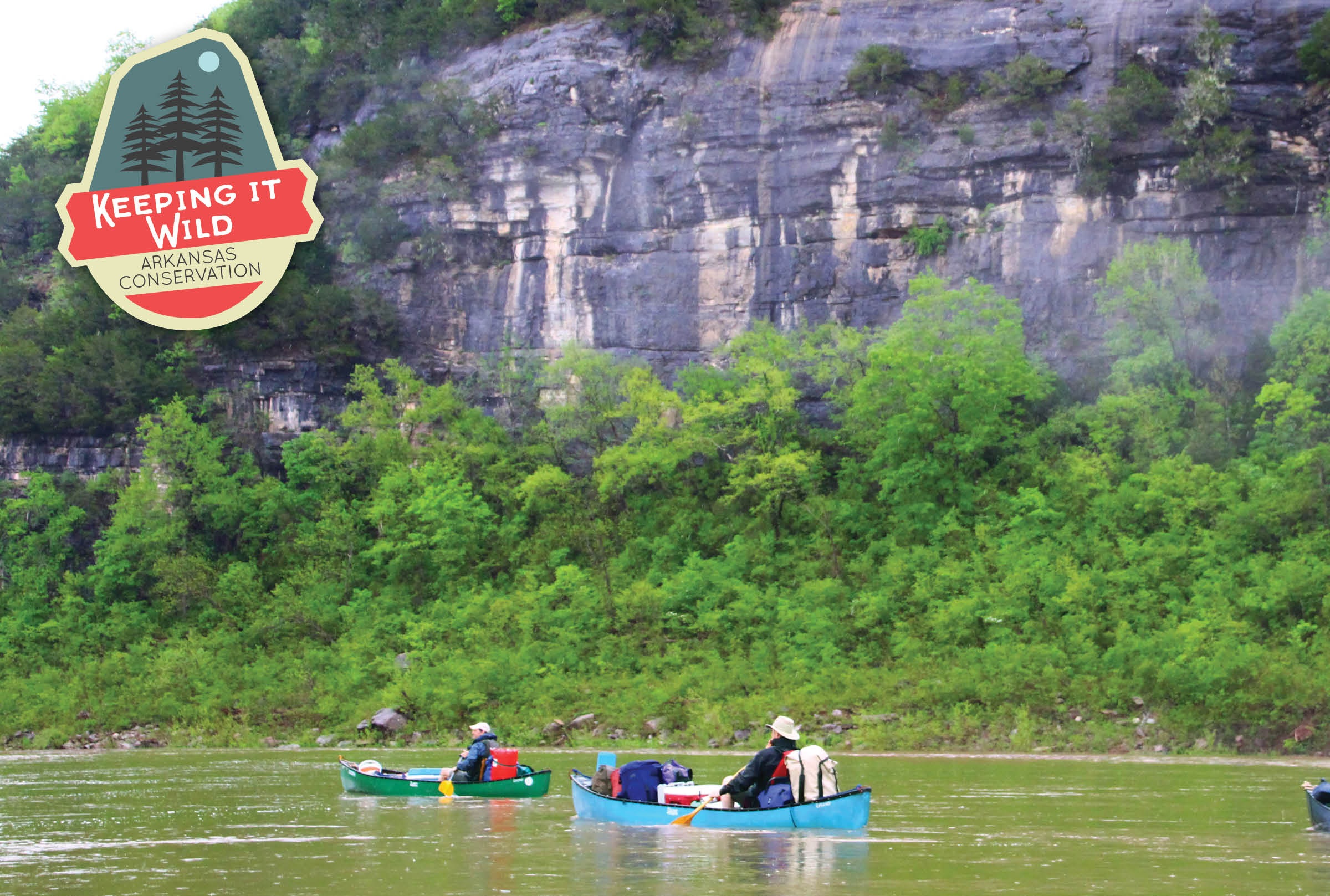Arkansas’s waterways get high marks, thanks to the work of activist organizations and concerned citizen groups throughout The Natural State.
Rivers of Life
State’s waterways in good shape, but challenges remain
By Bob Robinson
Kelly Irwin, herpetological program coordinator with the AGFC inspects a hellbender specimen.
Officials give Arkansas’s beloved waterways high overall marks for stream health and water quality but challenges remain that can threaten the state’s rivers and streams. That’s the conclusion of Jason Olive, assistant chief of fisheries management with the Arkansas Game and Fish Commission.
“In general, the quality of Arkansas’s waterways is quite good, especially relative to those in other areas of the country,” Olive said.
On the other hand, ongoing concerns surrounding waterway health focus on nutrient and sediment flowing into waterways. Of the two, nutrient pollution has received the lion’s share of media attention, with news reports focusing on waste runoff from large animal farms and agriculture productions.
However, Olive points out that sediment is actually the most common pollutant in Arkansas waterways. Comprised of loose sand, clay, silt and other soil particles, sediment settles at the bottom of a body of water primarily from soil erosion. Natural erosion produces nearly 30 percent of the total sediment in the United States with accelerated erosion from human use of land accounting for the remaining 70 percent.
Sediment disrupts the natural food chain in waterways by destroying the habitat where the smallest stream organisms live, thus causing massive declines in fish populations. In areas of weaker current, particles settle to the bottom and the once-clean gravel bed is covered with a coat of mud. Sediment thus degrades the quality of water for drinking, wildlife and the land surrounding streams.
A major contributor to the problem is landowners clearing trees and vegetation all the way down the banks of streams and lakeshore. With the tree roots no longer present to help anchor the soil along the shoreline, heavy rainfall washes fertile topsoil into the water.
A wildlife worker handles an Arkansas hellbender, one of the state’s endangered species.
The AGFC’s programs help landowners correct erosion issues. One such program is the Arkansas Stream Team, which helps landowners repair eroding stream banks. Matching landowners with appropriate agencies, erosion remediation plans are drafted according to each individual landowner’s situation, thus helping to resolve the issue.
Another source of sediment pollution in Arkansas’s waterways is unpaved roads. Each year tons of harmful sediment is washed off dirt and gravel roads and into streams, rivers and lakes.
In early 2013, the Arkansas Association of Counties, Arkansas Farm Bureau, The Nature Conservancy and a dozen partner organizations joined forces to establish the Arkansas Unpaved Roads Program to determine cost-effective solutions to better manage the problem.
PHOTOS: Bob Robinson
Mulberry River Society
Not all solutions stem from the government. Concerned citizens have also banded together for the express purpose of improving waterway health. One good example is the Mulberry River Society (mulberryriversociety.org). This group of local landowners, paddlers and hikers formed a 501C3 to help protect the Mulberry River. The group has been so critical to maintaining the health of the 70-mile waterway it received the Fostering Volunteerism and Service Award from the U.S. Forest Service in 2018. —BR
Eleven Point River
One success story concerning a sediment problem area is the Eleven Point River. After the Ozark hellbender salamander was placed on the endangered species in 2011, the AGFC assisted with a program to stop erosion on a section of the river located upstream from an Ozark hellbender habitat. They followed this up by releasing 100 captive-bred hellbenders into the waterway. Further monitoring has shown an increase in the population of the rare aquatic salamander. —BR





